Papaya Seeds from around the World
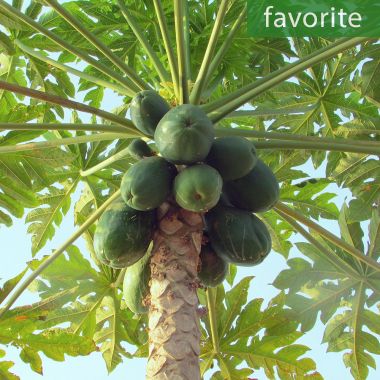
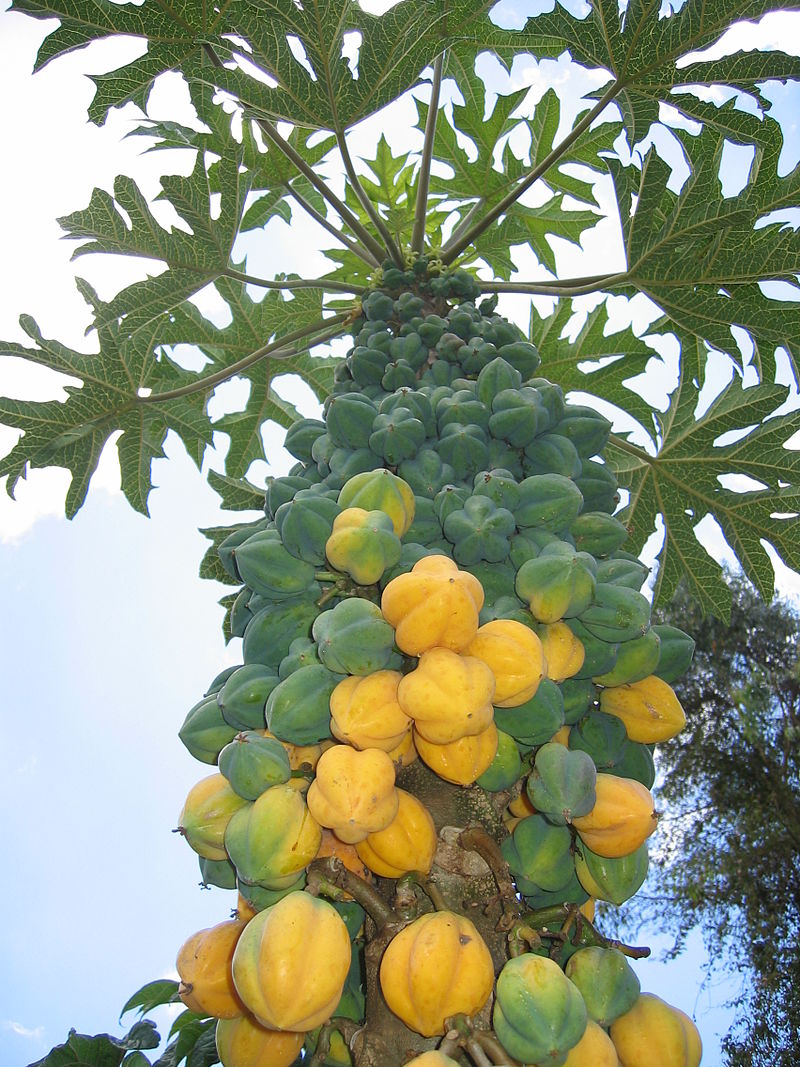
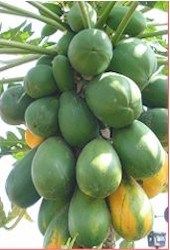
Improved Red Maradol is adaptable to many environments with 66% hermaphrodite / 33% female.
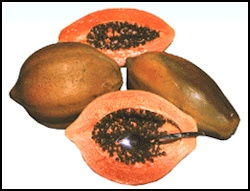
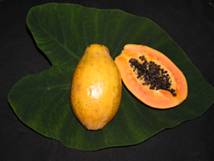
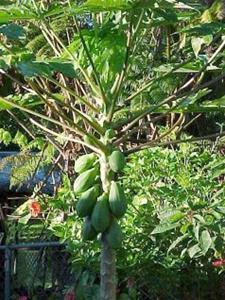

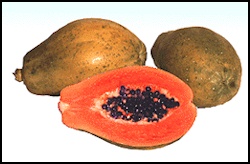
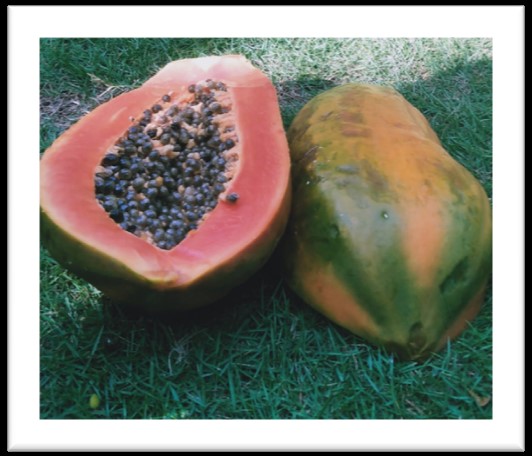
Fruit sets at 70 cm and is good for transportation. Very high yield potential with very aromatic, sweet fruit. 50% hermaphrodite/ 50% female. TSS 19 – 21%. Average Fruit size . size 3 to 5 pounds with high tolerance to PRSV.
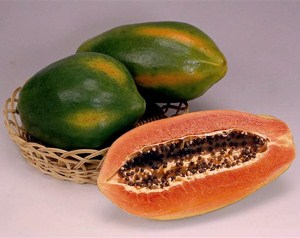
Hardy to Zone 10 and higher for outdoors.
Full sun, grows to 8' in container, minimum temperature 50°F, blooms in spring. Germination about 75%.
Jim's Plant Growth Stimulator
To see the results for yourself, we advise using it on some plants and not on others and see the difference.
Note: We only ship this product to addresses inside the USA. The following ingredients are used in making Jim's Plant Growth Stimulator:
Gibberellic Acid
Gibberellic Acid is EPA approved, and is commercially used to grow most fruits and vegetables we eat.
B1 Vitamins and Plant Hormones
Micronutrients
Other ingredients
Each 8 ounce bottle of JPG01 Plant Growth Stimulator makes 16 gallons spray-on solution, you can also use a drench and pour it around the base of the plant if you prefer. The bottle comes with a 1/2 ounce measuring spoon, simply mix a half ounce of plant growth stimulator with a gallon of water and spray onto the plants, or drench the soil around the plant. :
Ordinarily papaya flourishes on all type of well drained soils, even at a height of 3,000 ft above sea level. However for commercial purpose, light sandy loam and loam well drained alkaline soil is ideal. Papaya can be grown on raised rows in low lying areas. Seed rate: figure about 2,000 seeds per acre to acount for transplant loss and to aquire a spacing of mature plants 8 ft. apart.
Seed treatment: Prior to planting, make a weak solution of fungide/water ( any brand of gardening fungide will do ) and soak seeds in it for 5 minutes.
For small scale use:
Start seeds in trays using good grade potting soil. Treat soil with fungicide before
planting. Transplant seedlings in late afternoon to avoid shock.
Nursery Practice:
Prepare nursery beds of 15 ft. x 3 ft. Apply and work in a lot of well decomposed cow
manure 20 days before sowing.
Make ½" deep furrows at distance of 1½" apart. Sow seeds giving a spacing of ½". Fill
the furrows with1:1 mixture of dry crumbled leaves and soil. Cover the beds with black
polythene sheet or straw. Spray water regularly to maintain the top bed moisture, remove
top cover; and lightly irrigate to maintain constant moisture. One or two times spray with
mild fungicide solution. When the seedligs grow to a height of 2", transplant them to a
separate bed at a distance of 6"x6" or transfer into small perforated polythene bags filled
with 1:1 seived soil and cow dung ensuring that the plant depth does not exceed 1½".
When the plant attains 4-6" height, it will be ready to transfer into actual field.
Caution: Transplanting into polythene should be done under shady conditions
and be kept for at least two days under shade.
INFO ON GROWING PAPAYA
Julian W. Sauls
Extension Horticulturist
http://aggie-horticulture.tamu.edu/extension/homefruit/papaya/papaya.html
Papaya is native to Central America and is grown in tropical and warmer subtropical areas worldwide. It is a large herbaceous plant, usually with a single, straight trunk which can reach to 30 feet. The leaves are large (up to 3 feet in diameter) and deeply lobed, borne on hollow petioles 2 feet or more in length. The older leaves abscise as new leaves emerge, producing a palm-like form to the plant. The flowers and fruit arise from buds on the trunk at the base of the leaves.
Because of its tropical appearance and abundant fruit, papaya is in considerable demand for use in protected landscape settings throughout coastal and southern Texas.
Climate
Papaya thrives best under warm, humid conditions. It is generally intolerant of strong winds and cold weather. Temperatures just below freezing can kill small plants to the ground--larger plants that are not killed outright will normally produce suckers to regenerate the plant and bear fruit within a year.
Limited commercial plantings in the lower Rio Grande Valley rarely survive more than a few years because of freezing temperatures.
Soil and Site Selection
Papayas are adapted to practically any well drained soil. The plant is shallow rooted and will not tolerate excessive wetness or standing water. Raised beds can partly overcome drainage problems.
Although papayas thrive best in full sun, some concession can be made to protection from wind or cold weather. Close to the south or southeast side of the house is the warmest location in most residential sites. Some wind protection provided by other plantings or structures is helpful.
Varieties
Papayas are generally grown from seed so there are few true varieties. The Hawaiian Solo, Blue Solo and more recent types are fairly uniform and are closest to varietal status. Consequently, most papayas are types rather than varieties, so fruiting characteristics are better considered in groups.
Papaya is polygamous, with three primary sex types: female, male and bisexual. There are some cases where plants produce more than one kind of flower at the same time. Bisexuals are usually preferred for home plantings, but most types available in Texas are male or female. Because sex determination prior to flowering is practically impossible, two to four seedling plants are grown together until flowering to assure females for fruit production and males for pollination.
Fruit types range from small to medium round and medium to large oblong. Flesh color is mostly yellow, although there are some orange to red types.
Female flowers are borne along the trunk and can be identified by that location and the presence of a miniature papaya fruit inside the base of the flower petals. Male flowers are borne in long sprays that originate along the trunk. Each spray is much-branched with inch-long, trumpet-shaped, male flowers. Bisexual types are practically identical to the females, but have male stamens surrounding the miniature fruit inside the flower petals.
Propagation and Planting
Most papayas are grown from seed because of the impracticality of vegetative propagation methods in nursery production. Seeds are extracted from fully ripe fruit, washed to remove gelatinous material and planted several per pot of soil or potting medium.
Germination is accomplished in approximately two weeks under full sunlight. The plants can be set out as soon as they are large enough (about 1 foot tall) to survive with minimal care. The pots of plants should be spaced 8 to 10 feet apart. Papaya seedlings should begin flowering in five to six months, at which time they can be thinned to a single female or bisexual plant at each site. In the absence of bisexual plants, one male plant is needed for every eight to ten females.
Cuttings may be rooted to preserve a particularly desirable selection. However, branching must be induced by girdling or decapitation in order to provide the suckers for rooting.
Seed can be obtained from papaya fruit purchased at the local supermarket. If the fruit is from Hawaii, the chances are good that the resulting seedlings will be mostly bisexual. For nursery production of papaya seedlings with a high percentage of female or bisexual flowers, controlled pollination between desirable parents is essential.
Pollination
Pollination is accomplished by covering an unopened flower (female or bisexual) with a small paper bag until it opens, then transferring pollen from a bisexual (or male) flower onto the protected stigma, and re-covering the pollinated flower for several days. The resultant fruit should be marked so that its seed can be collected at maturity.
In colder areas where overwinter survival is questionable, seedlings can be developed in late fall and carried through the winter in greenhouses. After frost danger passes in spring, these seedlings can be planted outdoors to provide fruit until the next killing frost.
Culture
Weed and grass control within 3 to 4 feet of the papaya is essential for optimum growth and fruiting. Cultivation for weed control should be quite shallow, as the papaya's roots are concentrated near the soil surface. The use of organic mulches is highly recommended. Fertilizer at the rate of one-quarter pound of ammonium sulfate (21-0-0) per plant should be applied monthly after planting, increasing to one half pound six months after establishment.
Irrigation should be applied to thoroughly wet the soil periodically as needed through the year. Avoid standing water following irrigation. A fluctuating irrigation regime may retard growth and cause poor fruit set.
Because papayas rapidly reach 10 to 15 feet or more, cold protection of the top is difficult. Protection of the lower portion of the trunk may permit the plant to regrow from sprouts in the event of freeze damage.
Production, Maturity and Use
Well-tended papayas should produce fruit within a year of planting, with mature plants capable of producing 100 to 200 pounds of papayas per year. Fruit can be ripened off the plant after appearance of a yellow tinge at the apical end, but the fruit attains best quality if harvest is delayed until the fruit is completely yellow.
The most common use of papaya is fresh in slices or chunks and in fruit compotes. A thick juice can be prepared by blending diced papaya with a little water. Papaya can also be sliced and dried. Green papaya is sometimes cooked and eaten like squash. Papaya is a prime source of papain enzyme (meat tenderizer), so green fruit chunks and leaves can be wrapped around meat or fowl before cooking to enhance tenderness and flavor.
Disease and Insect Pests
Root rots can cause rapid death of papaya plants. The only solution is to set new plants in a better location with better drainage or use raised beds. Watering must be done with care.
Virus diseases are quite common and uncontrollable. They normally cause vein-clearing and yellow mottling of the leaves. Other symptoms include distortion of leaf growth accompanied by stunting, poor set and the presence of various greasy-appearing or yellow rings on leaves and fruit. Infected plants should be removed and destroyed.
Anthracnose appears on the fruit as irregular, water-soaked spots that later enlarge, darken and become sunken in the rind. Copper sprays have been of limited effect in severe situations, but would not be expected to be of much use under normal conditions in Texas.
Common whitefly is about the only insect pest which has affected papaya in Texas, leading to sooty mold on the foliage and fruit. Sweetpotato whitefly also is reported to favor papaya. The safest control is through spraying with a soapy water solution.
Tip burn and marginal necrosis (browning) of the leaves is caused by saline soil and water conditions common in much of Texas. Symptoms are usually more severe on older leaves and during the summer.
The information given herein is for educational purposes only. Reference to commercial products or trade names is made with the understanding that no discrimination is intended and that no endorsement by the Cooperative Extension Service is implied.
Educational programs conducted by the Texas Agricultural Extension Service serve people of all ages regardless of socioeconomic level, race, color, sex, religion, handicap or national origin.

